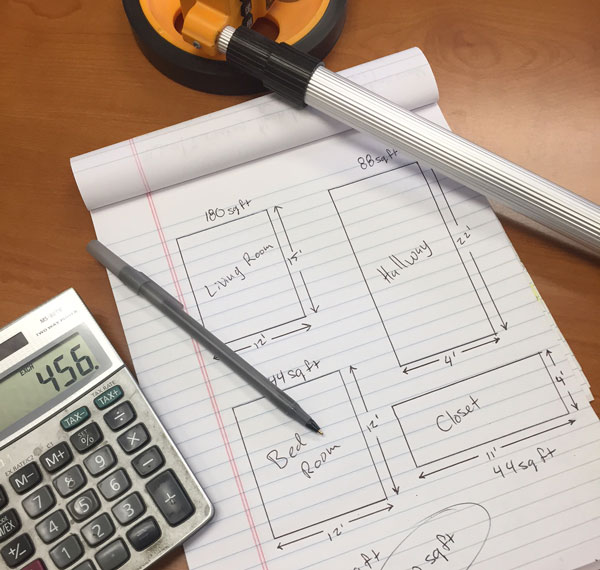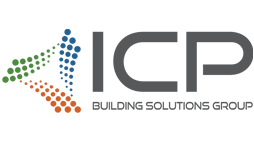The Basics of Material Estimating

Even the most experienced and professional applicators can have trouble determining the appropriate amount of materials needed for their project. Underestimating or overestimating can have a tremendous impact on budget, product availability, project scheduling, forecasting and bidding.
A successful project starts by taking an accurate lay of the land. Following are tips that will help pros confidently select which products to use, determine the quantities required for the project and avoid running short while on the job.
Calculate Project Square Footage
First, in order to determine how much material will be needed for a specific project, you must determine the square footage of the area you are surfacing. As a rule of thumb, measurements should always be rounded up and considered additional square footage to ensure the appropriate amount of material for the application.
Surface conditions such as porosity, spalling, pitting, cracking and so forth will all result in the use of additional material. Adding square footage to measurements will help ensure materials do not run short during application. A lot of contractors like to use the “ten percent rule” for waste and order accordingly.
Using a laser tape, measuring wheel or measuring tape is best to determine the length and width of the area that is being surfaced. If the work space is not a perfect square or rectangle, measuring from the furthest point of both the length and width will account for any shorter sides of the space. After measuring, round up to the next foot on the length and width measurements. Then, multiply the length and width to determine the total amount of square feet for that area.
Length x Width = Total Area
For example: 25’ x 40’ = 1,000 sq. ft.
If the work area is the entire floorplan of a house or business, measuring the outside perimeter of the building will provide a good estimate for the space. While the assumption is that there will be too much material left over, it’s wise to remember that the perimeter is taking into account all of the nooks and crannies, such as closets, hallways and bedrooms. If overhead or vertical surfaces such as walls or stairs are being surfaced, be sure to take those areas into consideration, too.
Determine Which Products to Use
When applying system-based products, it’s important to use all of the appropriate materials to ensure job success. Depending on the finish that the customer has selected, specifically whether it is a traditional broom finish, stamped texture, decorative flake or metallic epoxy, it is imperative to follow the system directions for that application. Information about all of the systems, the products they include and their individual application instructions is available at www.Super-Krete.com and www.APFepoxy.com.
Once a system is chosen, it’s important to list the products needed for application by referring to individual Product Data Sheets for directions for use, mixing and application instructions as well as the coverage rates. The coverage rates are needed to determine the quantity required to complete the project.
Calculate Quantity of Materials
Now that the area is known, as well as the products needed and coverage rates, it is time to calculate how much will actually be needed. It’s easy to figure out – simply take the total amount of square feet that were measured for the project, then divide the total amount of square feet by the coverage rate of the material.
Square Feet of Area ÷ Coverage Rate = Quantity of Bags or Gallons
For example: Let’s use the ¼” Stamp Overlay System to determine how many bags of S-1800 Super-Stamp Gray are required to stamp the total area. Super-Stamp is applied at ¼” and has a coverage rate of 25 square feet per bag. We will use the area we measured earlier for the example.
1,000 sq. ft. ÷ 25 sq. ft./bag = 40 bags
Now it’s time to figure out how many gallons of S-1710 Liquid Release Agent are needed to stamp the material. The Liquid Release has a coverage rate of 250-300 square feet per gallon. We want to make sure we have enough material and avoid running short while on the project, so let’s use 250 square feet as the coverage rate. One of the most common errors in figuring how much S-1710 Liquid Release Agent is required is forgetting that both the Super-Stamp overlayment and the stamps or skins must also be coated with the release agent.
1,000 sq. ft. ÷ 250 sq. ft./gallon = 4 gallons for the Super-Stamp overlayment and 1,000 sq. ft. ÷ 250 sq. ft./gallon = 4 gallons for the stamps or skins, therefore you will need a total of 8 gallons of S-1710 Liquid Release Agent.
Once you identify the coverage rates for all the materials, you can use these formulas to calculate the appropriate amount of material you will need for your entire project.
Calculating Cost of Materials
Since you will essentially be getting more product than required for the project, the initial cost of your materials will be greater than the actual cost per square foot. This will fluctuate from project to project and result in accumulation of leftover materials that can be used on future projects. This will also help cover the cost of creating samples to aid in getting your next project approved. For example: 3.5 gallons of one product and 0.5 gallons of another may be needed, but because you are purchasing 4 gallons of the one, and 1 gallon of the other, the actual cost is more than what will be applied on the job.
To properly bid on a project, a contractor needs to determine material cost. It’s important to remember that this doesn’t include any labor, freight charges, equipment rental or any outsourced or sub-contracted services. All factors should be considered before submitting the actual bid to a client.
After determining the amount of material needed, just add up the actual cost of all the materials. To calculate the cost per square foot on material for the example project, divide the total cost of materials by the square footage. Let’s apply a cost of $3,060.16 to determine the cost per square foot. (Note: $3,060.16 is estimated and is not a true cost, it is only used for example)
$3,060.16 ÷ 1,000 sq. ft. = $3.06/sq. ft.
In the case that some services need to be subcontracted or equipment needs to be rented, those charges would be incorporated into the total landed cost.
Continuing with the example above, if grinding equipment had to be rented for two days at $65/day ($130 total), the new total cost would come to $3,190.16 and the cost per square foot would now be $3.19/sq. ft.
These same figures would be applied once the general overhead costs are determined, along with indirect expenses and, of course, your profit. Once again, divide that total by the total amount of square footage and it will generate the actual cost per square foot, allowing a contractor to accurately and confidently submit their bid.






